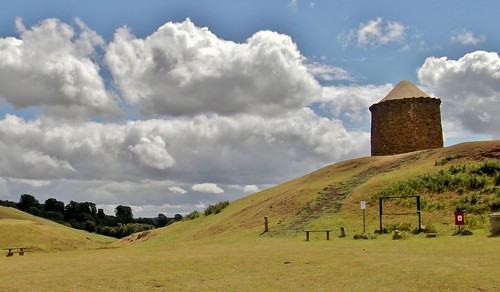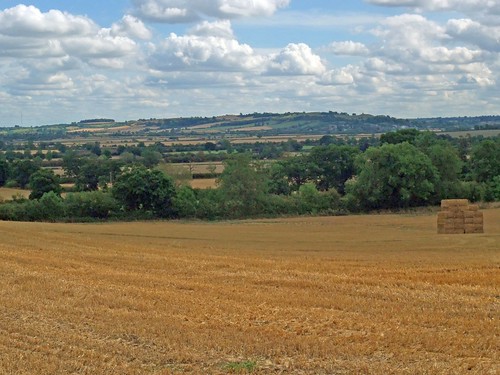 Amongst the several estimates of the slain, it is hard to say which is nearest the truth. Clarendon gives the number as 5,000,
Amongst the several estimates of the slain, it is hard to say which is nearest the truth. Clarendon gives the number as 5,000, During the cold frosty night after the battle the wounded must of necessity have been left exposed, inasmuch as the fight stretched over many miles of country, and was continued until night; nor do the Royalists appear
During the cold frosty night after the battle the wounded must of necessity have been left exposed, inasmuch as the fight stretched over many miles of country, and was continued until night; nor do the Royalists appear  and after a very cold night spent on the field, without any refreshment of victual or provision for the soldiers (for the country was so disaffected that it not only sent no provisions
and after a very cold night spent on the field, without any refreshment of victual or provision for the soldiers (for the country was so disaffected that it not only sent no provisions,
 but many soldiers who straggled into the villages for relief were knocked on the head by the common people), the King found his troops very thin.”
but many soldiers who straggled into the villages for relief were knocked on the head by the common people), the King found his troops very thin.”
London. Though so much is recorded of Mr. Wilmot’s (afterwards Lord Rochester, of Adderbury,) position and work during the day, nothing other than the mere statement is made of a far greater leader,
 Spencer Compton, Earl of Northampton, than that he was at Edge Hill, with some of the best disciplined men.[MW] It would seem that the extended movement of the Royalist forces along the hill ridge in the early part of the day was to give support to Compton Wynyate
Spencer Compton, Earl of Northampton, than that he was at Edge Hill, with some of the best disciplined men.[MW] It would seem that the extended movement of the Royalist forces along the hill ridge in the early part of the day was to give support to Compton Wynyate,
 or get aid therefrom. It was but three miles distant. Whether any deflection of Hampden’s force moving from Stratford-on-Avon
or get aid therefrom. It was but three miles distant. Whether any deflection of Hampden’s force moving from Stratford-on-Avon was made to mask or retard Compton’s men is mere surmise: the main part of Hampden’s rear did not reach the field until the Sunday midnight, when Essex got reinforced by a regiment of horse and two of foot.
was made to mask or retard Compton’s men is mere surmise: the main part of Hampden’s rear did not reach the field until the Sunday midnight, when Essex got reinforced by a regiment of horse and two of foot.The story of successive campaigns, as in this the first fight, resolves itself into the superiority of the heavy armament of the Parliamentarian horse. The improved status of the men added greater force at a later date. With all the dash, and all the value of the light horse of the King for foray, when in the field the cavalier went down before the iron armed horse of the Parliament’s army
.
In the early stages of the war, there would have been very little difference between the two armies. The officers on both sides were all gentlemen, and would have dressed in very simliar clothing. And the common soldiers would also be mostly dressed alike, more simply than the officers. There was a tendency for Puritans to wear their hair short (hence their nickname of Roundheads) and so some of them would have been short-haired, but not all the parliamentarians were Puritans by any means, so it would not have been universal. Mercenary soldiers would ahve been better equipped than the amateur soldiers who made up the bulk of the army.
In 1645, Oliver Cromwell, who was not a leader of the war at the beginning, but had slowly risen to prominence during the course of the war, formed the New Model Army, a coordinated body of trained fighting men under the command of Sir thomas Fairfax. They were better trained and equipped than the semi-independent fighting groups that had hitherto made up the army, and they went on to win the war.
.

In the early stages of the war, there would have been very little difference between the two armies. The officers on both sides were all gentlemen, and would have dressed in very simliar clothing. And the common soldiers would also be mostly dressed alike, more simply than the officers. There was a tendency for Puritans to wear their hair short (hence their nickname of Roundheads) and so some of them would have been short-haired, but not all the parliamentarians were Puritans by any means, so it would not have been universal. Mercenary soldiers would ahve been better equipped than the amateur soldiers who made up the bulk of the army.
In 1645, Oliver Cromwell, who was not a leader of the war at the beginning, but had slowly risen to prominence during the course of the war, formed the New Model Army, a coordinated body of trained fighting men under the command of Sir thomas Fairfax. They were better trained and equipped than the semi-independent fighting groups that had hitherto made up the army, and they went on to win the war.
No comments:
Post a Comment